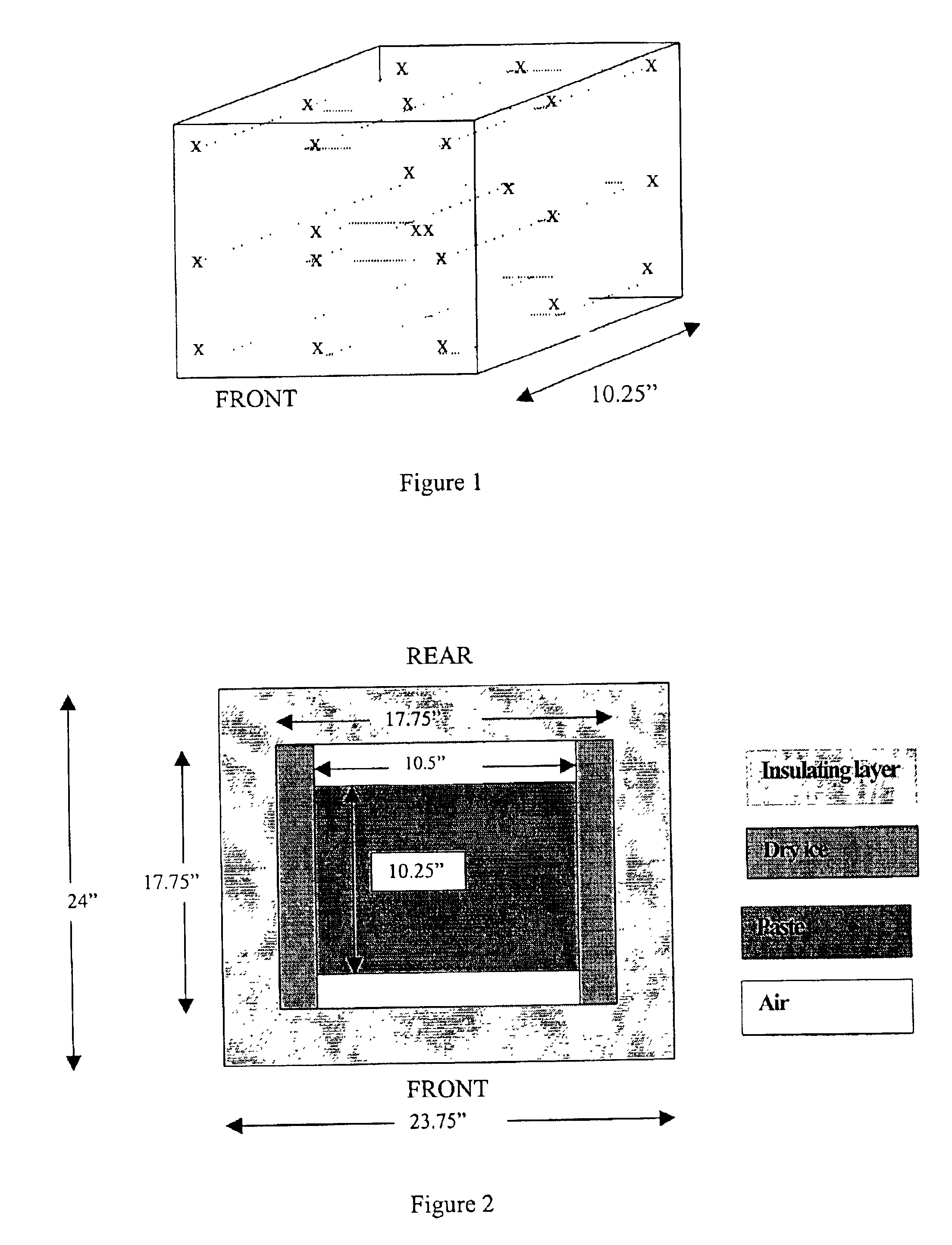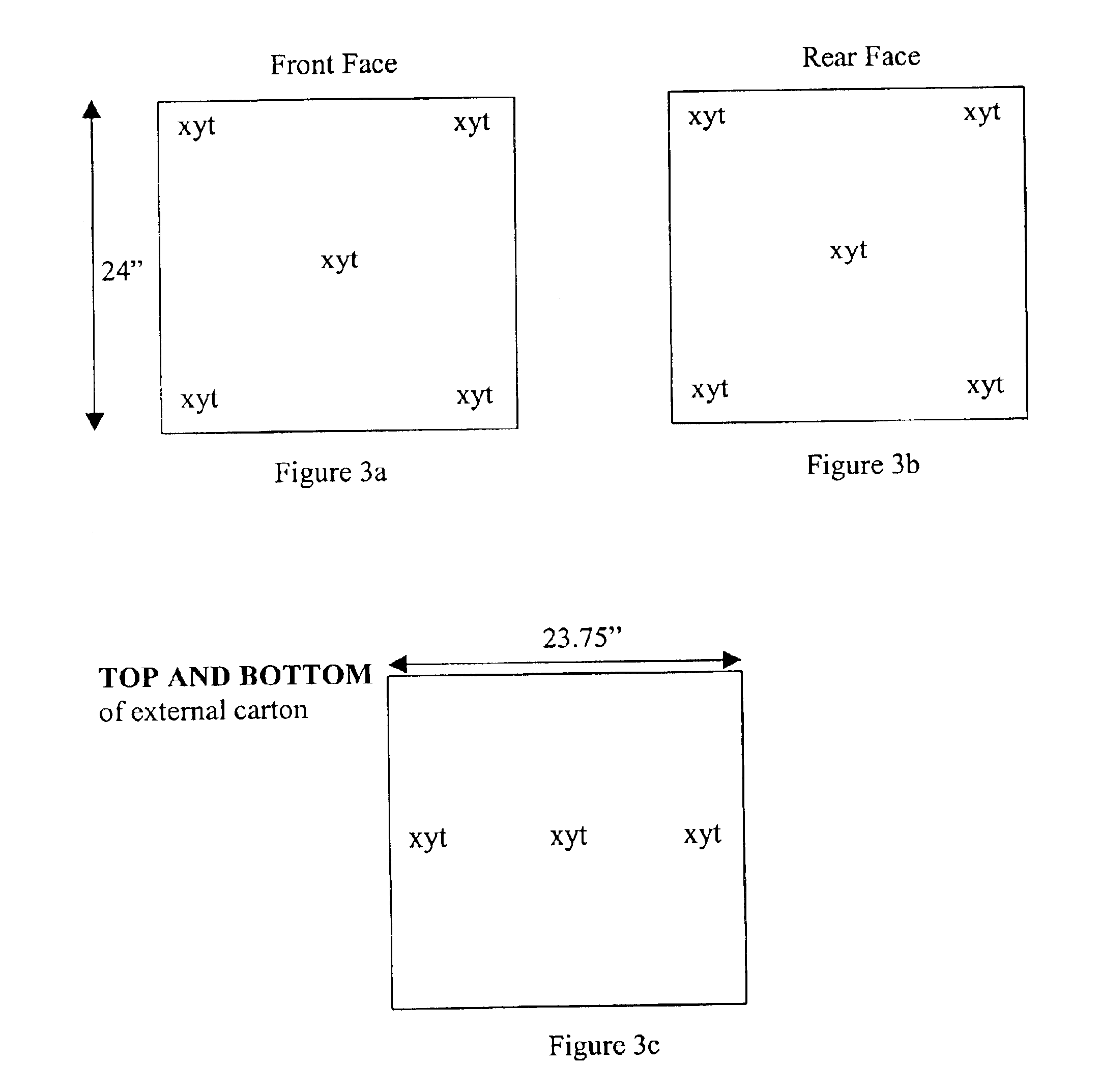Methods for sterilizing biological materials by irradiation over a temperature gradient
- Summary
- Abstract
- Description
- Claims
- Application Information
AI Technical Summary
Benefits of technology
Problems solved by technology
Method used
Image
Examples
example 1
[0115]In this experiment, porcine heart valves were gamma irradiated in the presence of polypropylene glycol 400 (PPG400) and, optionally, a scavenger, to a total dose of 30 kGy (1.584 kGy / hr at −20° C.).
Materials:
[0116]Tissue—Porcine Pulmonary Valve (PV) Heart valves were harvested prior to use and stored.[0117]Tissue Preparation Reagents—[0118]Polypropylene Glycol 400. Fluka: cat# 81350, lot# 386716 / 1[0119]Trolox C. Aldrich: cat# 23,881-3, lot# 02507TS[0120]Coumaric Acid. Sigma: cat# C-9008, lot# 49H3600[0121]n-Propyl Gallate. Sigma: cat# P-3130, lot# 117H0526[0122]α-Lipoic Acid. CalBiochem: cat# 437692, lot# B34484[0123]Dulbecco's PBS. Gibco BRL: cat# 14190-144, lot# 1095027[0124]2.0 ml Screw Cap tubes. VWR Scientific Products: cat# 20170-221, lot# 0359[0125]Tissue Hydrolysis Reagents—[0126]Nerl H2O. NERL Diagnostics: cat# 9800-5, lot# 03055151[0127]Acetone. EM Science: cat# AX0125-5, lot# 37059711[0128]6 N constant boiling HCl. Pierce: cat# 24309, lot# BA42184[0129]Int-Pyd (Acet...
example 2
[0190]In this experiment, the effects of gamma irradiation were determined on porcine heart valve cusps in the presence of 50% DMSO and, optionally, a stabilizer, and in the presence of polypropylene glycol 400 (PPG400).
Preparation of Tissue for Irradiation:
[0191]1. 5 vials of PV and 3 vials of atrial valves (AV) were thawed on ice.
[0192]2. Thaw media was removed and valves rinsed in beaker filled with PBS.
[0193]3. Transferred each valve to 50 ml conical containing PBS. Washed by inversion and removed.
[0194]4. Repeated wash 3 times.
[0195]5. Dissected out the 3 cusps (valves).
[0196]6. Stored in PBS in 2 ml screw top Eppendorf Vials (Eppendorfs) and kept on ice.
Preparation of Stabilizers:
[0197]All stabilizers were prepared so that the final concentration of DMSO was 50%.
1 M Ascorbate in 50% DMSO:
[0198]Aldrich: cat# 26,855-0, lot# 10801HU[0199]200 mg dissolved in 300 μl H2O. Add 500 μl DMSO. The volume was adjusted to 1 ml with H2O. Final pH was ≈8.0.
1 M Coumaric Acid:[0200]Sigma: cat#...
example 3
[0256]In this experiment, frozen porcine AV heart valves soaked in various solvents were gamma irradiated to a total dose of 30 kGy at 1.584 kGy / hr at −20° C.
Materials:
[0257]1. Porcine heart valve cusps were obtained and stored at −80° C. in a cryopreservative solution (Containing Fetal calf serum, Penicillin-Streptomycin, M199 media, and approximately 20% DMSO).
[0258]2. Dulbecco's Phosphate Buffered Saline. Gibco BRL: cat#14190-144, lot#1095027
[0259]3. 2 ml screw cap vials. VWR: cat# 20170-221, lot #0359
[0260]4. 2 ml glass vials. Wheaton: cat# 223583, lot#370000-01
[0261]13 mm stoppers. Stelmi: 6720GC, lot#G006 / 5511
[0262]DMSO. JT Baker: cat# 9224-01, lot# H40630
[0263]Sodium ascorbate. Aldrich: cat# 26,855-0, lot 10801HU; prepared as a 2M stock in Nerl water.
[0264]8. Fetal calf serum
[0265]9. Penicillin-Streptomycin
[0266]10. M199 media
[0267]11. DMSO
Methods:
Preparation of Solutions
[0268]Freeze Medium:[0269]Fetal calf serum (FCS) (10%)=50 ml[0270]Penicillin-Streptomycin=2.5 ml[0271]M199...
PUM
 Login to View More
Login to View More Abstract
Description
Claims
Application Information
 Login to View More
Login to View More - R&D
- Intellectual Property
- Life Sciences
- Materials
- Tech Scout
- Unparalleled Data Quality
- Higher Quality Content
- 60% Fewer Hallucinations
Browse by: Latest US Patents, China's latest patents, Technical Efficacy Thesaurus, Application Domain, Technology Topic, Popular Technical Reports.
© 2025 PatSnap. All rights reserved.Legal|Privacy policy|Modern Slavery Act Transparency Statement|Sitemap|About US| Contact US: help@patsnap.com


